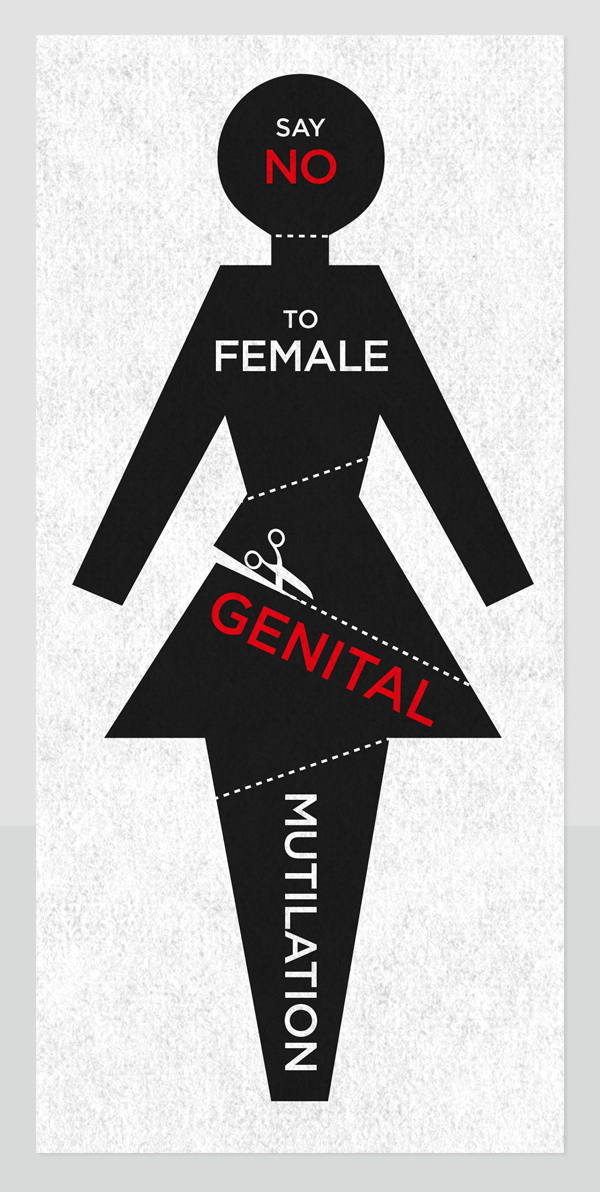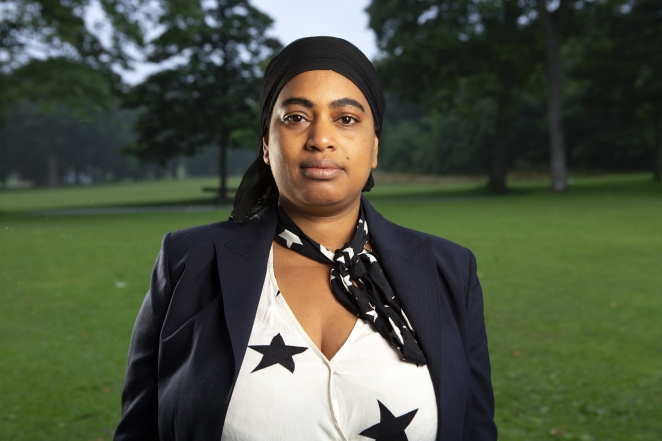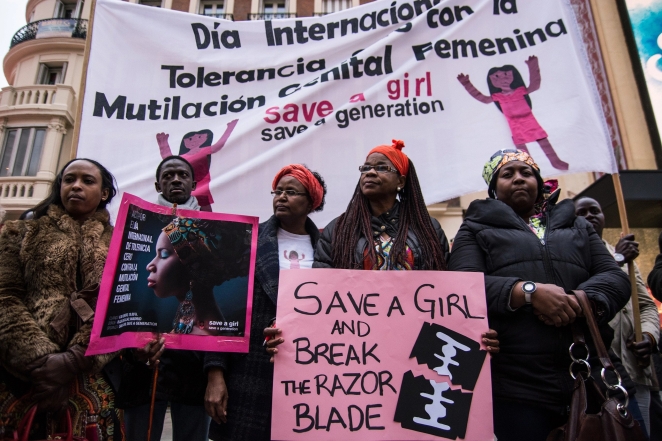Earlier this year, Leeds Health and Care Partnership, on behalf of NHS West Yorkshire Integrated Care Board released a health campaign to raise awareness around the illegal practice of female genital mutilation (FGM).
The campaign aimed to encourage women who have undergone or have experienced physical and psychological problems as a result of FGM to seek support at its Blossom Clinic which serves the entire north of England.
FGM has been outlawed in the UK since 1985 but the risk to women and girls especially under the age of 15 remains significant: 60,000 are believed to be at risk and an estimated 137,000 women have undergone the procedure.
NHS West Yorkshire ICB in Leeds wanted to spearhead an impactful but sensitive campaign appealing to survivors who typically live in wider communities higher levels of deprivation, and where women navigate both language and stigma barriers, to come forward and seek help.
Partnering with Thompson - a brand and design consultancy with a specialism in health and wellbeing sectors - a careful cohesive narrative was created comprising the brave accounts of women, told in their own voices and native tongue, describing how their lives have been impacted and scarred by FGM.
To learn more, we spoke to Chris Skelton, Creative Director at Thompson, on how the agency approached this campaign with sensitivity by creatively using language and visuals to break through the taboo topic.
What was the brief?
We were asked to create a campaign that would encourage women who have experienced FGM to get in touch with the Blossom Clinic, so they can receive treatment, talk about their experiences, and start the healing process.
The campaign aimed to encourage women who had had experienced physical and emotional problems because of FGM to seek support from the NHS-backed clinic which serves the entire north of England.
How did the initial pitch/brainstorming phase go?
We were initially engaged by the team at NHS West Yorkshire ICB to tender for the campaign, and immediately felt this was a campaign that was very important to us as an agency. We are doing whatever we can personally and professionally to overcome stigma and to level the playing field for women.
We were also already working on a project about de-stigmatising vulvas, for sexual health charity, Brook. So, we had unique anatomical knowledge first, but also real insight into how to talk to people about such a sensitive topic, albeit with hugely different audiences.
When we received the brief for this campaign, the chance to work on something that had the power to make such a difference to women really mattered to us. We committed to doing a brilliant job and investing some of our own time free of charge.
We ensured that the team working on the project would be a diverse, female-led team, ensuring a real empathy for the brief, along with the ability to generate challenging ideas that Thompson is known for.
The pitch required us to meet a variety of criteria set out by the client, including breaking down stigmas, addressing cultural divides, language barriers, and of course cost and tactics. We knew we could draw on the experience we had in running similar campaigns that addressed stigma, such as ‘Love your vulva’ for Brook, and ‘Mind the Gap’ which aimed to reduce health inequalities.
What was the process behind ideating the concept?

When we heard the survivors’ own stories, we realised what a privileged position we were in and how much responsibility we had as a team to tell those stories to the world in the right way. There was a strong need to break language barriers to make the clinic accessible for survivors. We wanted to ensure that women in the community knew what kind of services the clinic offered.
We had to tread carefully to ensure overall the tone was as sensitive as it is impactful. Our photographer, Ejatu Shaw, had previously explored cultural identity in her work, and so she felt it was important to meet with the FGM survivors and photograph them in a way that empowered them.
The ambition was to create a far-reaching impact, with a simple concept. We implemented layers of messaging, and layers of graphic style to communicate the key message ‘Talking is healing’.
Throughout it was important to maintain a clear view on what really mattered – encouraging women to seek help, rather than highlighting the horrors of the procedure itself. We wanted women to feel reassured when they saw the campaign posters.
What was the production process like?
We wanted to work as closely with the community as possible, so we enrolled London-based photographer, Ejatu Shaw who has emotional ties to the project. Her own mother is an FGM survivor, and she very nearly suffered the procedure herself. Her personal
understanding of what her subjects had been through paired with her creative talent made Ejatu the ideal photographer for the project.
We worked with the FGM advocate Hawa Bah, who works closely in the community with FGM survivors to identify women who would be happy to become the face of the campaign.
Third sector organisation, Touchstone helped to put us in touch. Since then, we’ve also had women come to us directly to offer their help. For the day of the shoot, we worked with three FGM survivors, who were all willing to be photographed and filmed, and to share their experiences.
Due to the nature of the target audience, the final deliverables were printed leaflets and posters, produced in 5 different languages, and distributed within the community.
To ensure these were of the highest quality, we completed detailed retouching in our studio to ensure the photography retained as much impact as possible when printed. We worked closely with a printer to ensure the stock felt premium and the quality of the print reflected the colours and assets developed as part of the brand development process.
What was the biggest challenge during production? How did you overcome it?
Women who have suffered FGM are often pressured to keep their pain secret by their families or their own communities. They are told it's a cultural norm and to speak out would be a betrayal. In extreme cases, women may be threatened with punishment or death if they talk about what's happened.
Some women who have been cut in infancy may not even be aware of what's happened to them or understand why they are in pain. To overcome this, Thompson offered empathy and reassurance through messaging, encouraging women to seek help in a safe space.
Another challenge for the campaign was the sheer breadth of cultures and languages involved. Women who have suffered FGM emerge from countries as far apart as Gambia and Egypt. How would it be possible to communicate with such a diverse group in a way that was clear and relatable? This led to the different terms for FGM being presented in multiple languages to reach as many women as possible.
What kit/tools/software were used to create the project?
The design materials for the campaign were created in our design studio, using the Adobe suite.
What is one funny or notable thing that happened during production?

Talking to the survivors on the shoot, it became clear how deeply entrenched in certain cultures FGM really is, and how it’s still accepted as just something that happens in certain parts of the world. We found this hard to understand, let alone accept. One advocate drew a parallel with the practice of washing raw chicken.
‘British people don’t wash raw chicken,’ she explained. ‘We always wash the chicken, but you think that’s crazy. You just won’t wash the chicken!’ In her view, that’s simply something that happens there, while something different happens here. And changing that isn’t as easy as shouting, ‘Wash the chicken!’
What’s the main message of this project and why does it matter?
The main message is to encourage survivors to seek the support that is available for them, to break taboos around the topic of FGM, to remove feelings of shame and focus on the strength of survivors. We also wanted survivors of FGM to know there is a supportive and safe community at the Blossom Clinic.
How long did it take from inception to delivery?
We started the campaign in May 2021, and pushed the campaign live in February 2022, in time for FGM awareness day on 6th February.
What do you hope it achieves for the brand?
We hope the campaign puts the Blossom Clinic at the centre of both emotional and clinical support for survivors of FGM and is seen as a safe haven for community members to seek help.
Ultimately, we want it to drive a measurable increase in women attending the clinic and getting the help they need. We also hope that it opens conversations in the community and starts to change the situation in the UK for the better.
Credit list for the work?
Agency: Thompson
Client: NHS West Yorkshire ICB in Leeds
Senior designer: Ellie Polston
Copywriter: Nick Hynes
Creative director: Chris Skelton
Photographer: Ejatu Shaw
Account director: Chris Pickup
Senior account manager: Harriet Milner
Film producer: Johnny Burrell
Videographer and editor: Tom Hunter







